Kolkwitzia, often referred to as the "beauty bush", is a shrub that enchants with its delicate pink bell-shaped flowers. Native to China, this deciduous shrub thrives particularly well in well-drained soils and in sunny to partially shaded locations. Its ability to form a natural screen and its ease of cultivation make it a must-have for gardening enthusiasts. Easy to maintain, it can also be propagated by cuttings to enrich your green space.
Learn when and how to propagate Kolkwitzia with our detailed guide.
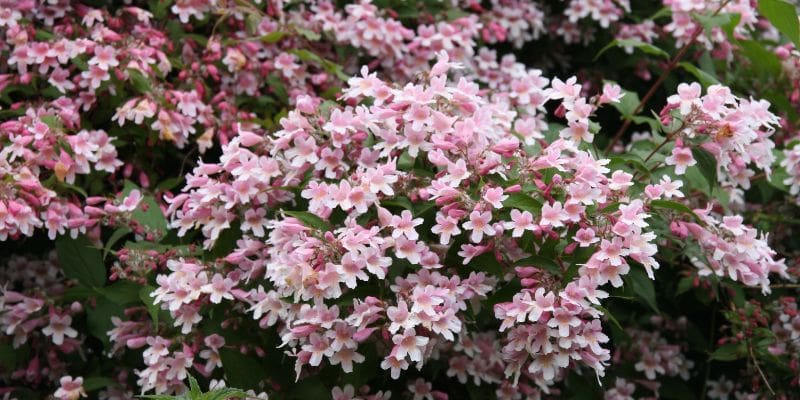
When to propagate Kolkwitzia?
The ideal time to propagate Kolkwitzia is at the end of summer or the beginning of autumn, typically between August and September. Thanks to the sunlight and warmth during this period, the cuttings develop their roots quickly. Additionally, the current year's stems, which are still semi-woody, are in optimal conditions for propagation.
Note: Kolkwitzia can also be multiplied by clump division.
How to propagate Kolkwitzia?
1- Start by filling your pots with potting soil up to 2 cm from the top. Firmly pack the substrate with your hands.
2- Using a spray bottle, moisten the potting soil with rainwater;
3- Make a hole (or several) in the potting soil with a pencil, 4 to 5 cm deep, to avoid damaging your cuttings;
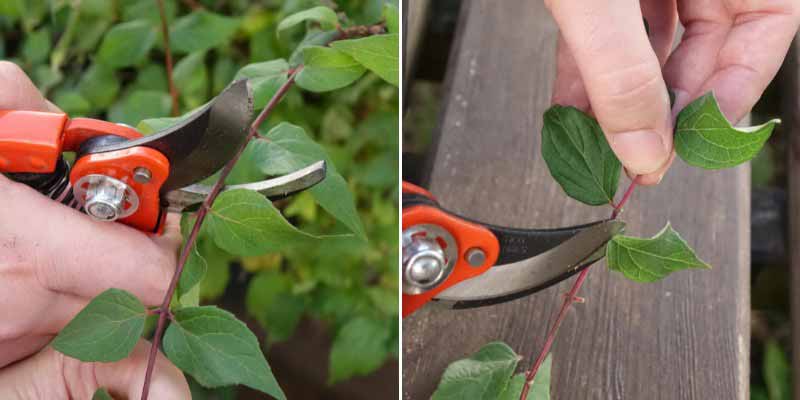
4- Observe your shrub. Choose healthy stems, free from signs of disease or stress. They should be semi-woody, meaning still somewhat flexible but hardening.
5- Using pruning shears, cut segments of stem about 15 to 20 cm long, just below a node (the point where a leaf joins the stem). If possible, take a heel (that is, keep a piece of bark from the parent branch when detaching the shoot).
6- Remove the leaves from the lower half of the cutting. Then, remove every other leaf from the upper part. This will prevent excessive transpiration of the cutting so it doesn't become exhausted.
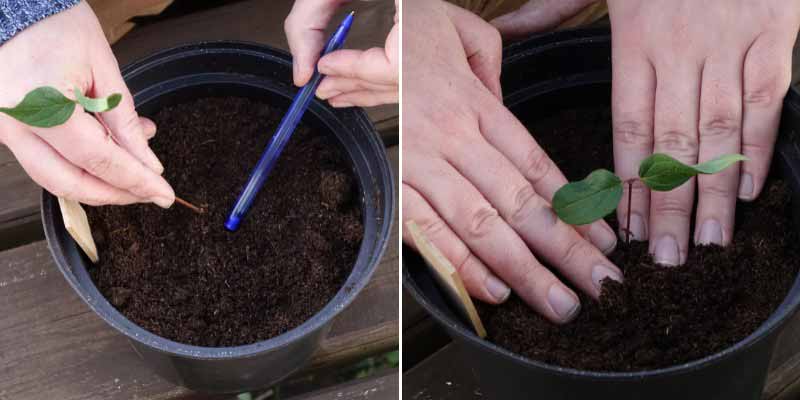
7- Dip the cut end of the cutting into a rooting hormone (optional, but it can improve the success rate). Then, plant the stem in the hole in the potting soil, ensuring that the lower third of the cutting is buried.
8- Firmly pack the potting soil around the stem and water again if necessary.
9- To maintain a humid atmosphere around your cutting, place a bell jar over it. A cut transparent plastic bottle or a plastic bag supported by bamboo stakes will also work. Ensure that the stem and leaves do not come into direct contact with the bell jar to prevent mould from developing.
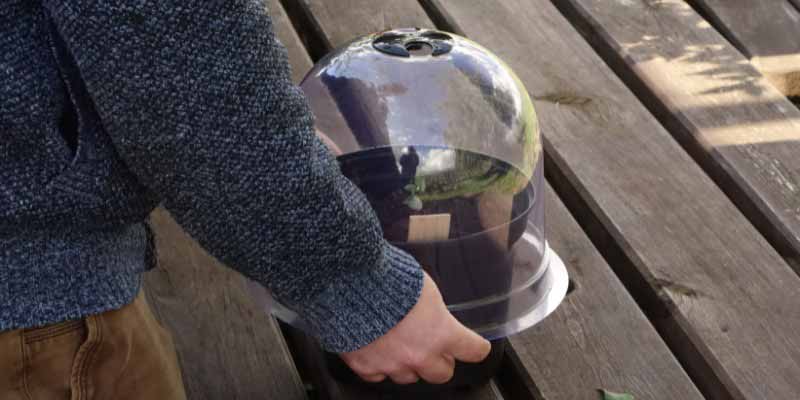
10- Place the cuttings in a warm, bright location, but out of direct sunlight. Keep the soil slightly moist, but not soggy.
11- With proper care, the cuttings should start to develop roots after 3 to 4 weeks. You can then remove the bell jar and repot into a larger pot if necessary.
12- During the cold season, move your young plants to an unheated greenhouse or a well-lit space without heating, such as a conservatory. Reduce the frequency of watering.
Planting your Kolkwitzia cuttings in the ground
Once your young plants have established a good root system, usually the following spring, they can be transplanted to their permanent location.
Choose a sunny or semi-shaded location. Keep in mind that the "beauty bush" is more floriferous in full sun.
Add a few handfuls of sand and gravel to the bottom of the planting hole to ensure effective drainage around the roots. If the soil is heavy and clayey, lighten it further with potting soil or compost. If your soil is sandy, enrich it with well-rotted manure or compost.
Finally, water regularly throughout the first year after planting, especially during dry spells.
Materials needed for propagating Kolkwitzia
For successful cuttings, here is the equipment you will need:
- one or more buckets or pots;
- a clean or disinfected pruning shear;
- a bell jar or a mini greenhouse or a bottomless plastic bottle or a translucent plastic bag to create a "suffocated" cutting;
- a spray bottle;
- Ideally, potting soil for sowing and repotting. You can also mix 1/3 of horticultural soil with 1/3 of sowing soil and 1/3 of sand for gardening;
- a pencil;
- optional: a rooting activator.
Further reading
- Find everything you need to know in our article: Kolkwitzia: planting, pruning, and maintenance.
- Discover all our varieties of Kolkwitzia.































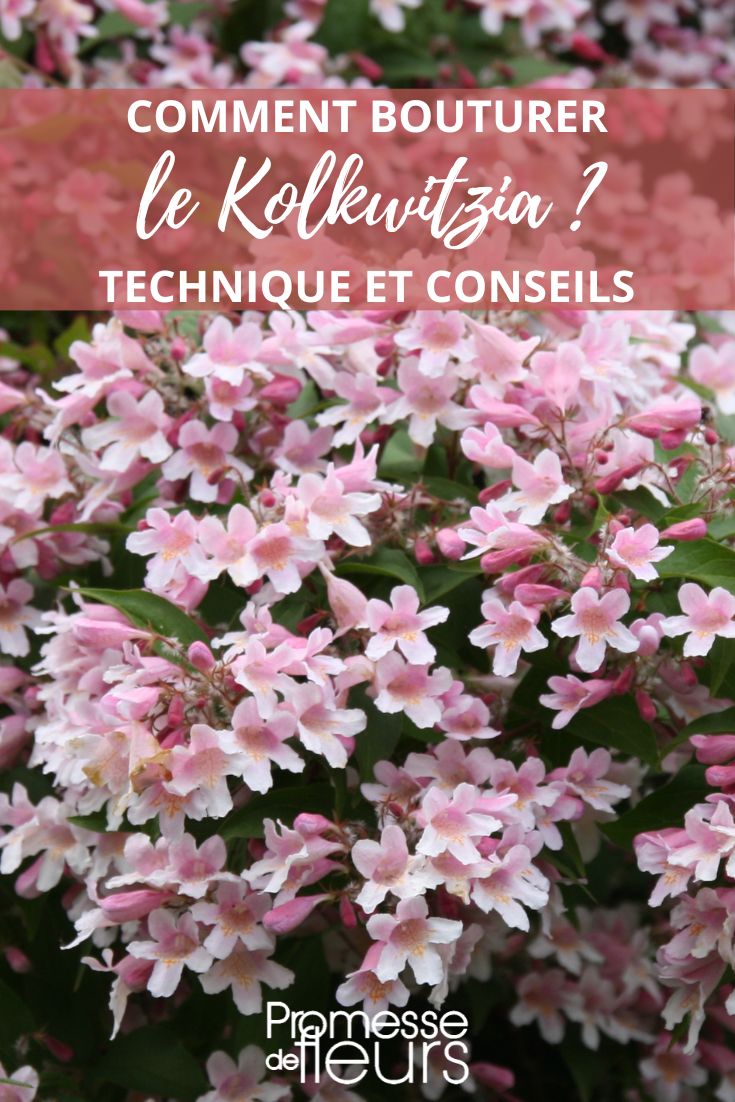
Comments